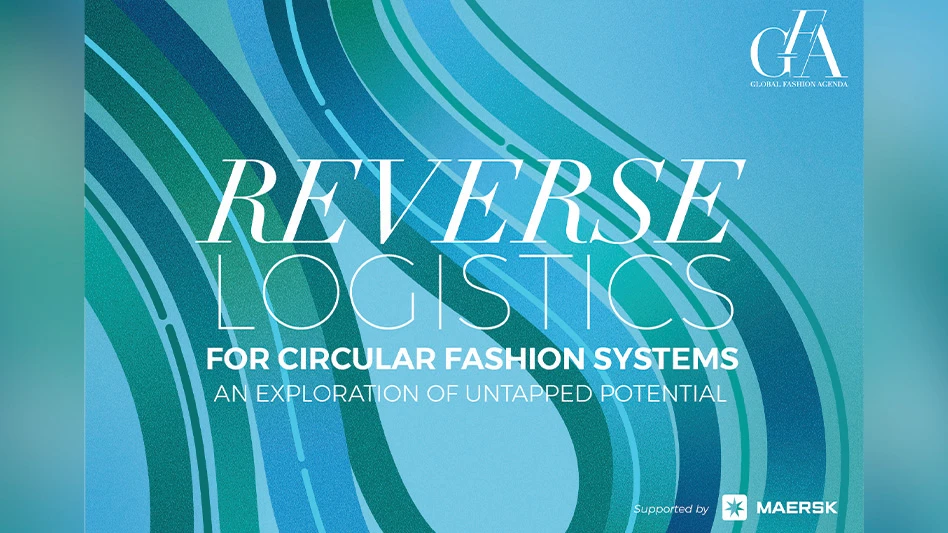
Image courtesy of the Global Fashion Agenda
A new report expands on how fashion brands, retailers, value chain partners and logistics providers can use reverse logistics to build an effective and holistic circular fashion system.
Produced by the Denmark-based Global Fashion Agenda (GFA) and its partner, Maersk, the report, “Reverse Logistics for Circular Fashion Systems,” includes extensive research and input based on consultations with representatives from eight brands and organizations—Maersk, Nike, H&M Group, Target, Puma Group, the Ellen MacArthur Foundation, VF Corp. and the Circle Economy Foundation.
The GFA says the report highlights the critical role of logistics in supporting fashion companies to adopt more circular systems by managing the reverse flow of materials and products from end users and returning them back into the system for resale, remaking or recycling in order to extend their lifecycle, maximize their value and minimizing waste.
“Global Fashion Agenda’s new report on reverse logistics, supported by our insight partner Maersk, is a crucial guide for the fashion industry, offering clear strategies for embracing circular systems that not only enhance business operations, but also harness the opportunities of used textiles,” GFA CEO Federica Marchionni says. “I strongly encourage leaders to engage deeply with their logistics partners, use innovative technologies and adopt a comprehensive approach to circularity. By doing so, we can collectively extend the lifecycle of products, reduce waste and create substantial economic value.”
More than 520 global regulations currently are in place, urging companies to rethink their sourcing and design strategies, emphasizing regionalization and circularity. Additionally, the organization says 45 percent of brands surveyed earlier this year reported they have set targets to derive at least 10 percent of their revenue from circular business models by 2040.
However, despite the potential, the GFA reports that the fashion industry lacks a comprehensive system for circularity, with current fragmented approaches failing to achieve commercial viability. The organization claims deeper collaboration with logistics partners can support more streamlined operations while aiding compliance with tightening regulatory requirements and in demonstrating positive environmental impacts.
To guide stakeholders, the GFA says its report outlines “essential elements” for implementing reverse logistics, including:
- Network design: Expanding reverse logistics beyond consumer returns to capture and valorize postindustrial textile scrap flows and unsold goods.
- Financial ownership: Establishing clear financial models to define roles, responsibilities and profit sharing, enhancing collaboration and investment.
- Boosting collective volumes: Developing infrastructure for efficient collection and processing of textile scrap, essential for scaling solutions and reducing recycled fiber costs.
“Logistics is an integral part of any successful circular system,” Maersk Head of Commercial Sustainability Kaisa Tikk says. “Circularity requires both fashion companies and their logistics providers to rethink the setup of linear supply chains. Collaborating with logistics providers will provide fashion companies guidance on how logistics can help enhance fashion supply chains’ transition to circularity and avoid logistics being a road blocker during implementation of circular systems.”
Get curated news on YOUR industry.
Enter your email to receive our newsletters.
Latest from Recycling Today
- Radius to be acquired by Toyota subsidiary
- Algoma EAF to start in April
- Erema sees strong demand for high-volume PET systems
- Eastman Tritan product used in cosmetics packaging
- Canada initiates WTO dispute complaint regarding US steel, aluminum duties
- Indianapolis awards solid waste contract, updates recycling drop-off program
- Novelis produces first aluminum coil made fully from recycled end-of-life automotive scrap
- GPR’s hubbIT platform recognized in Georgia State University’s Marketing Awards for Excellence in Innovation






